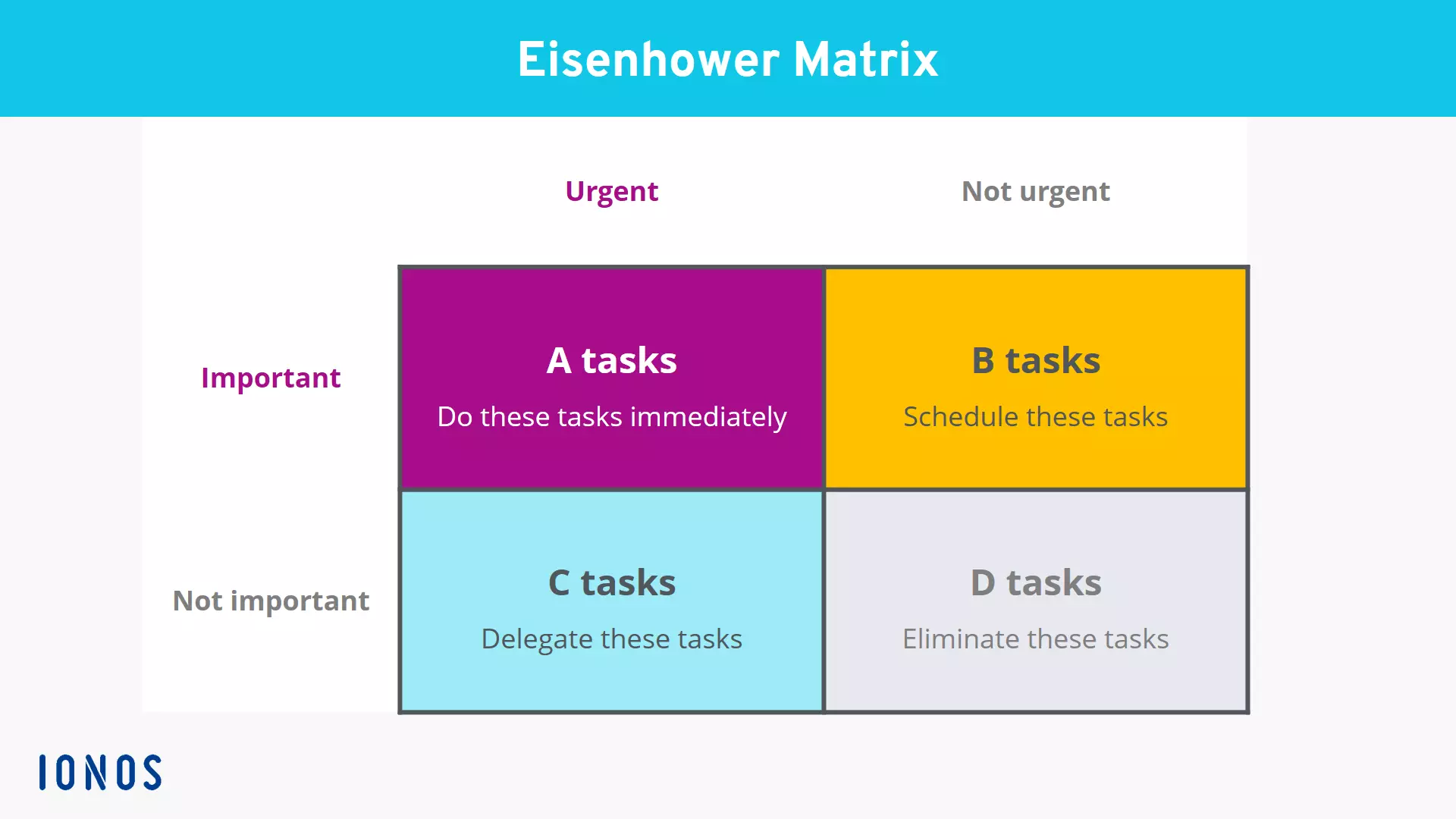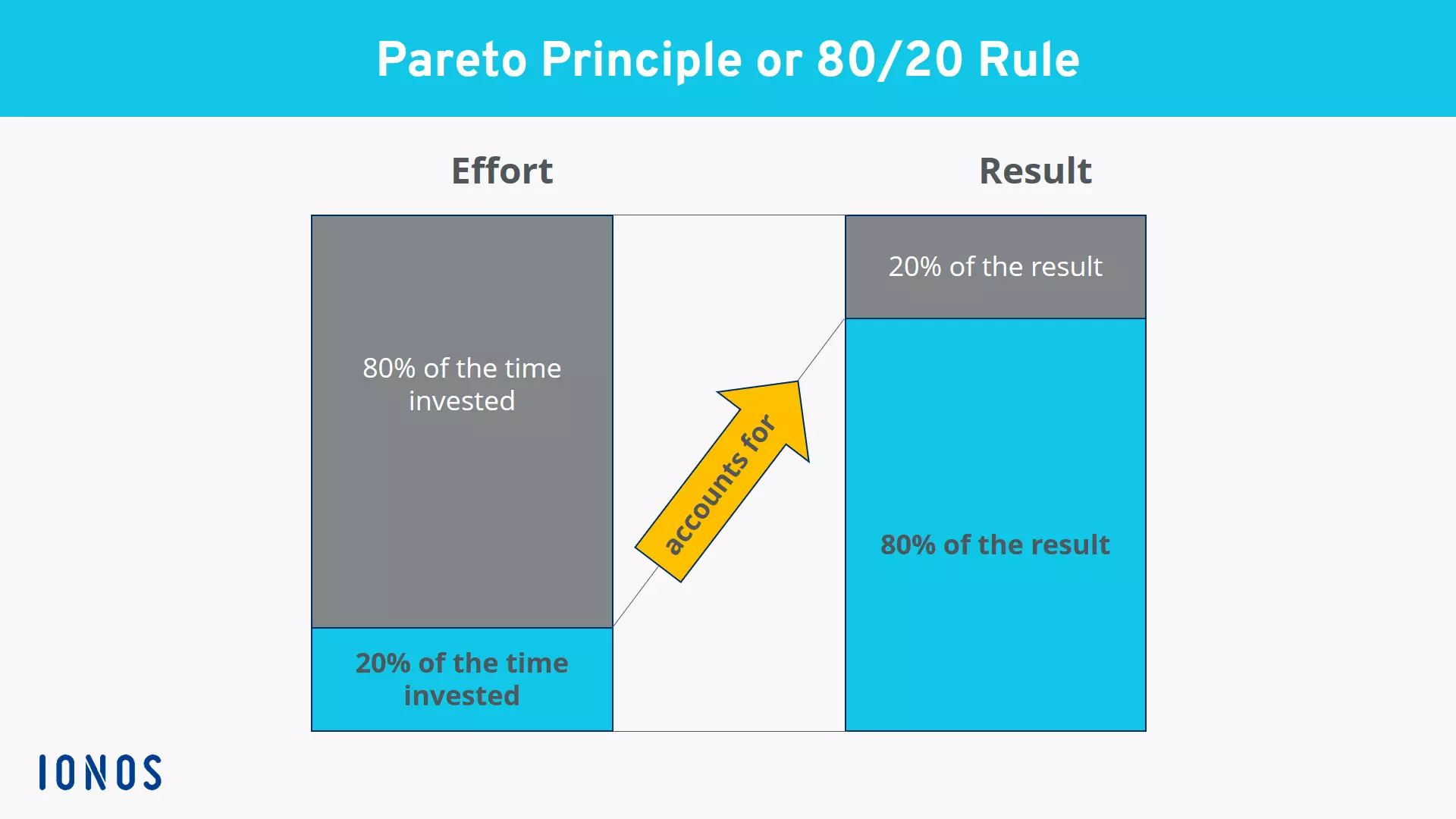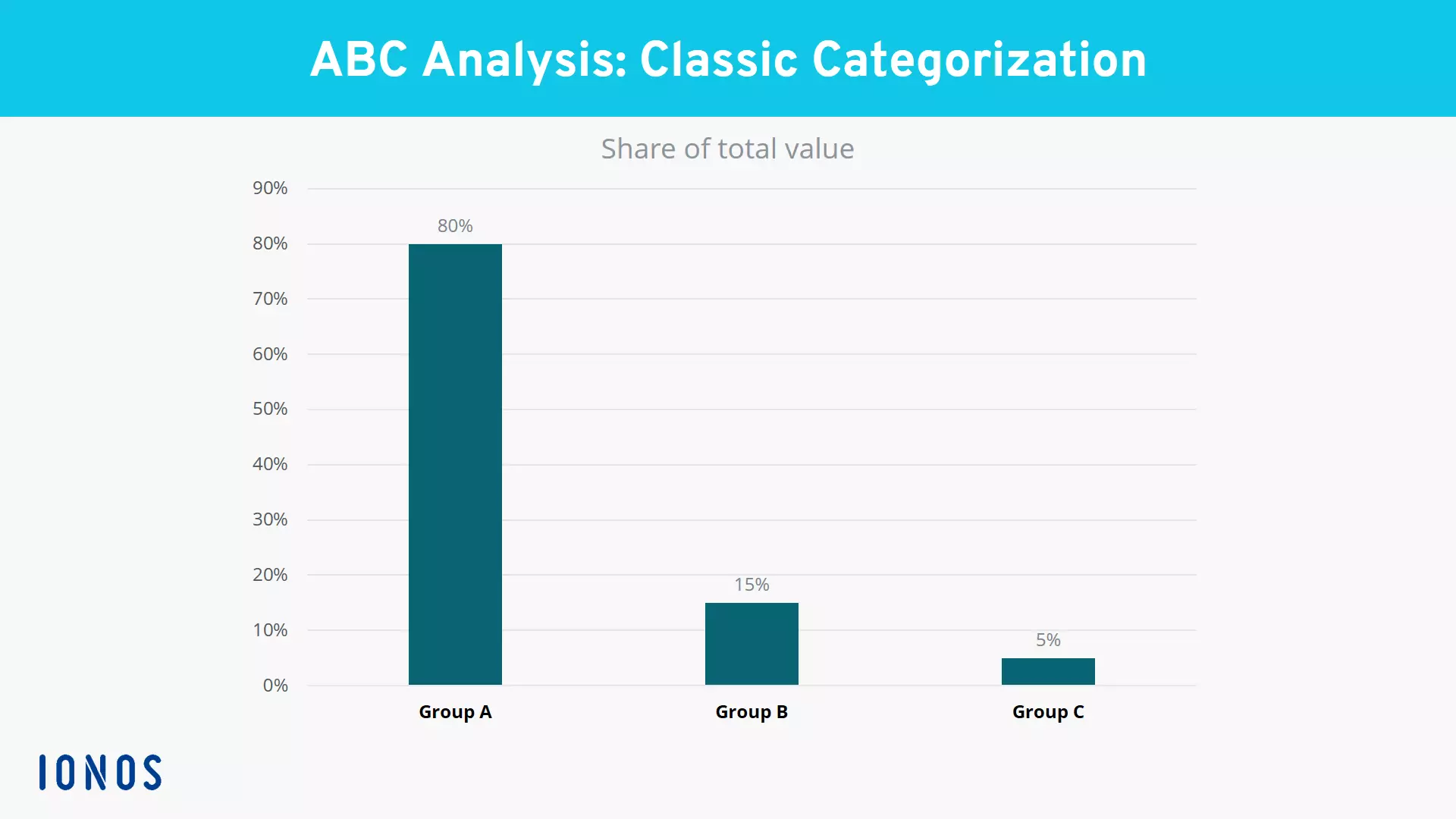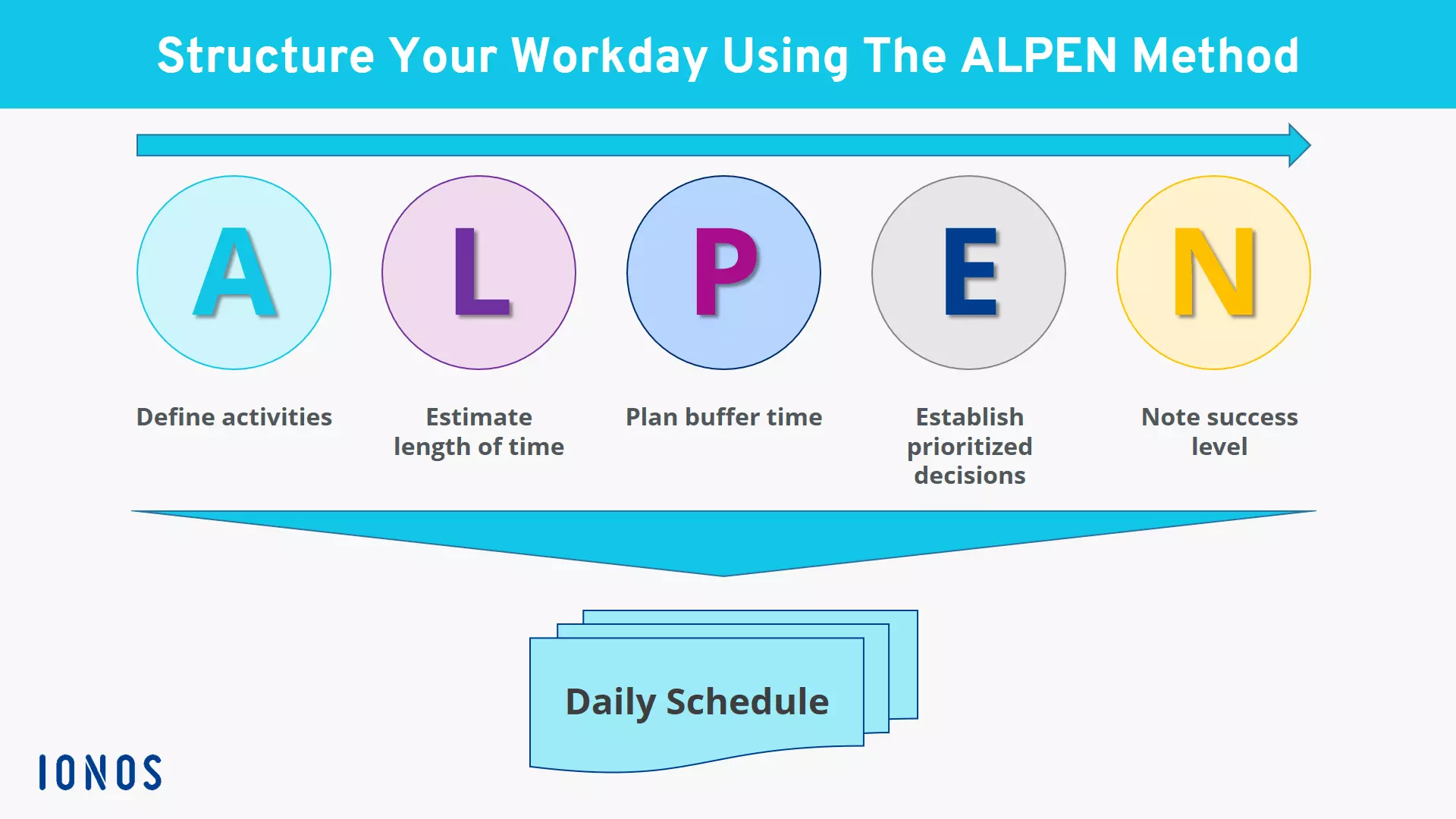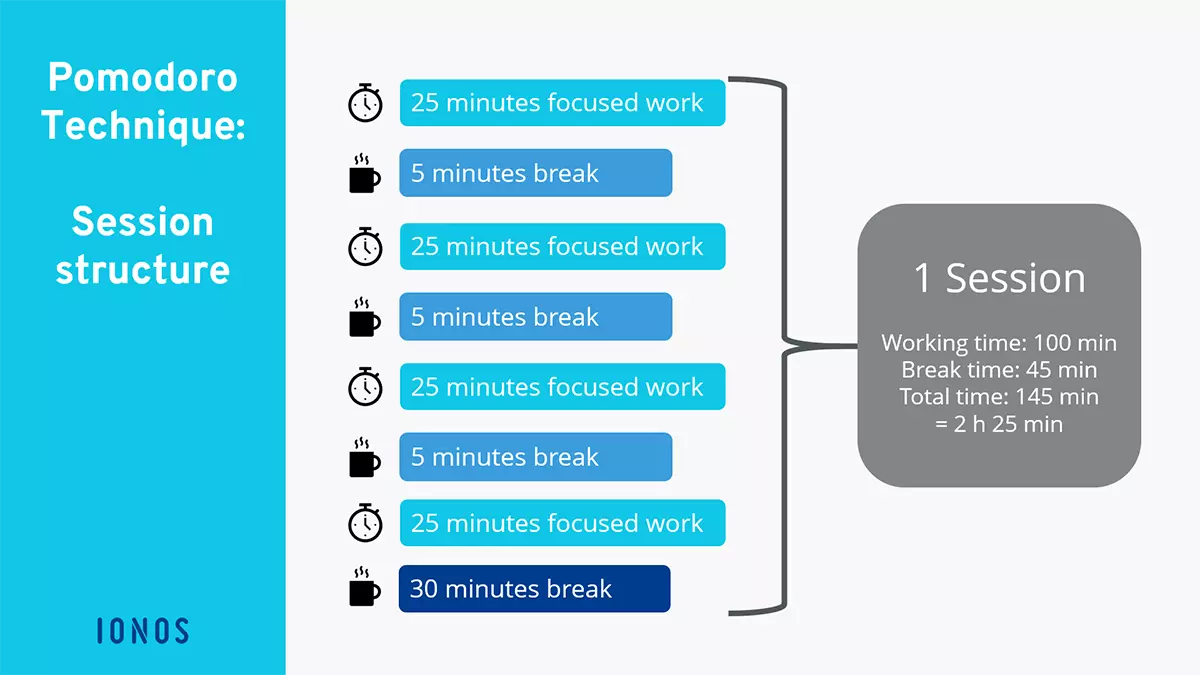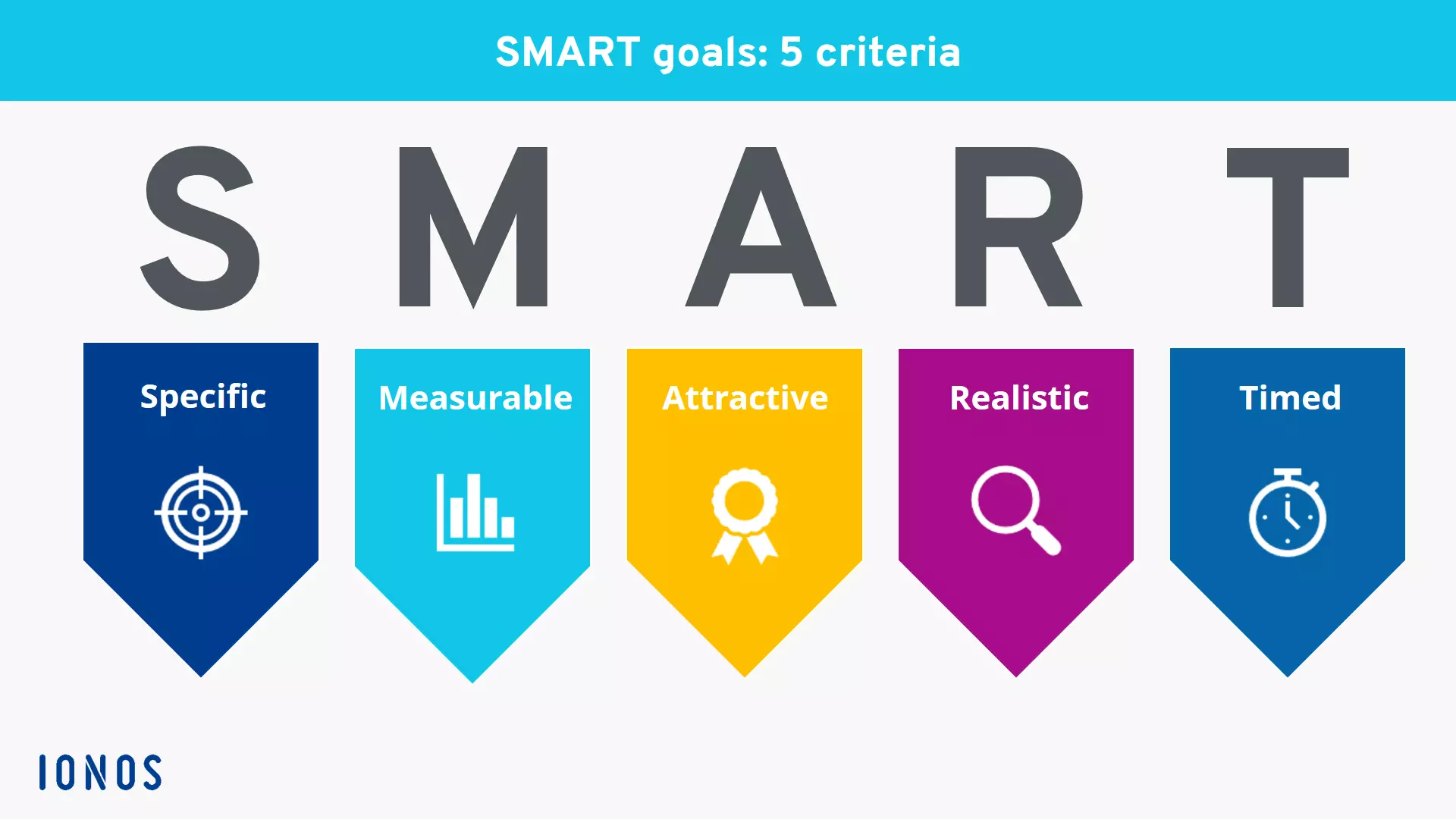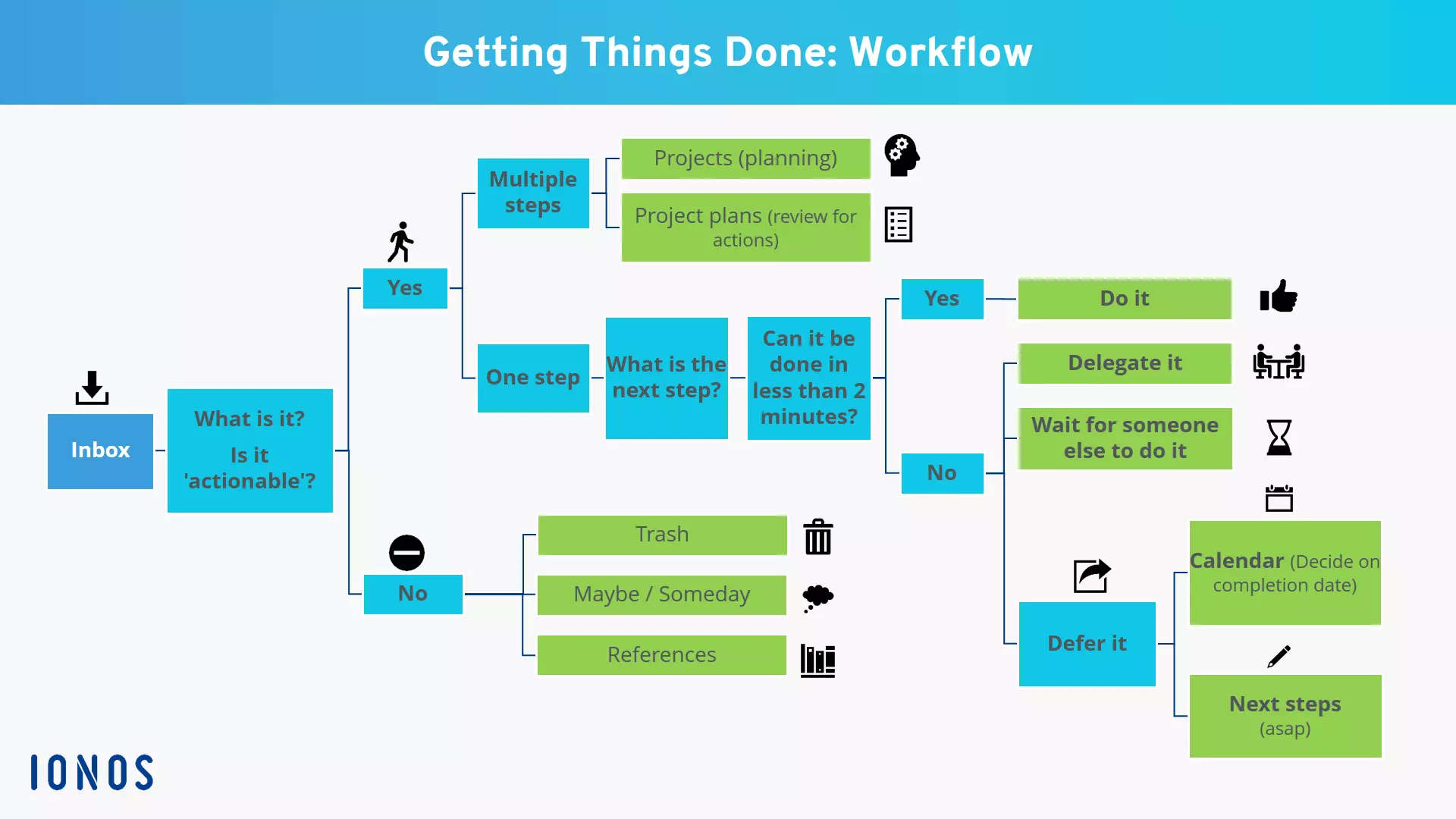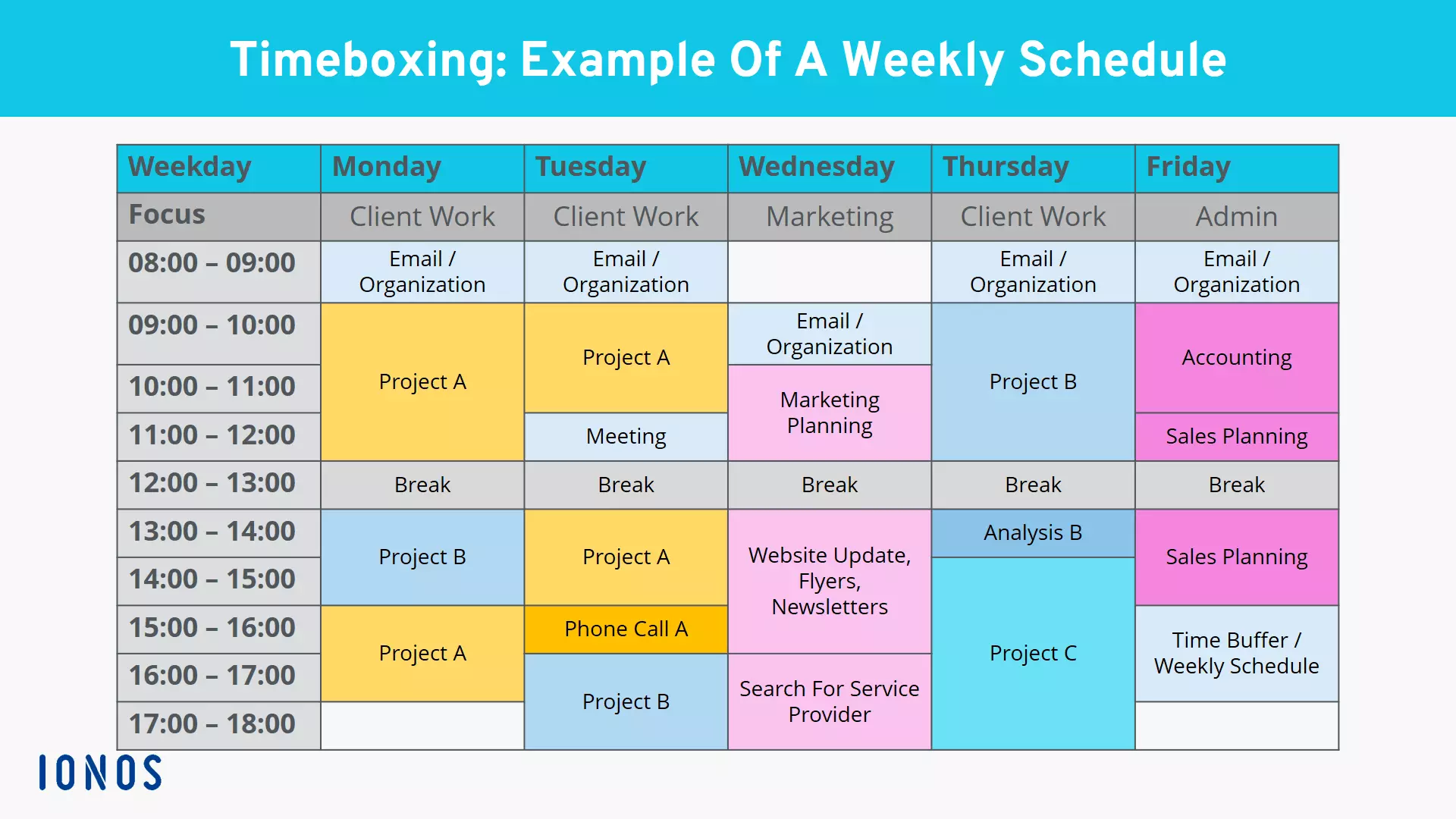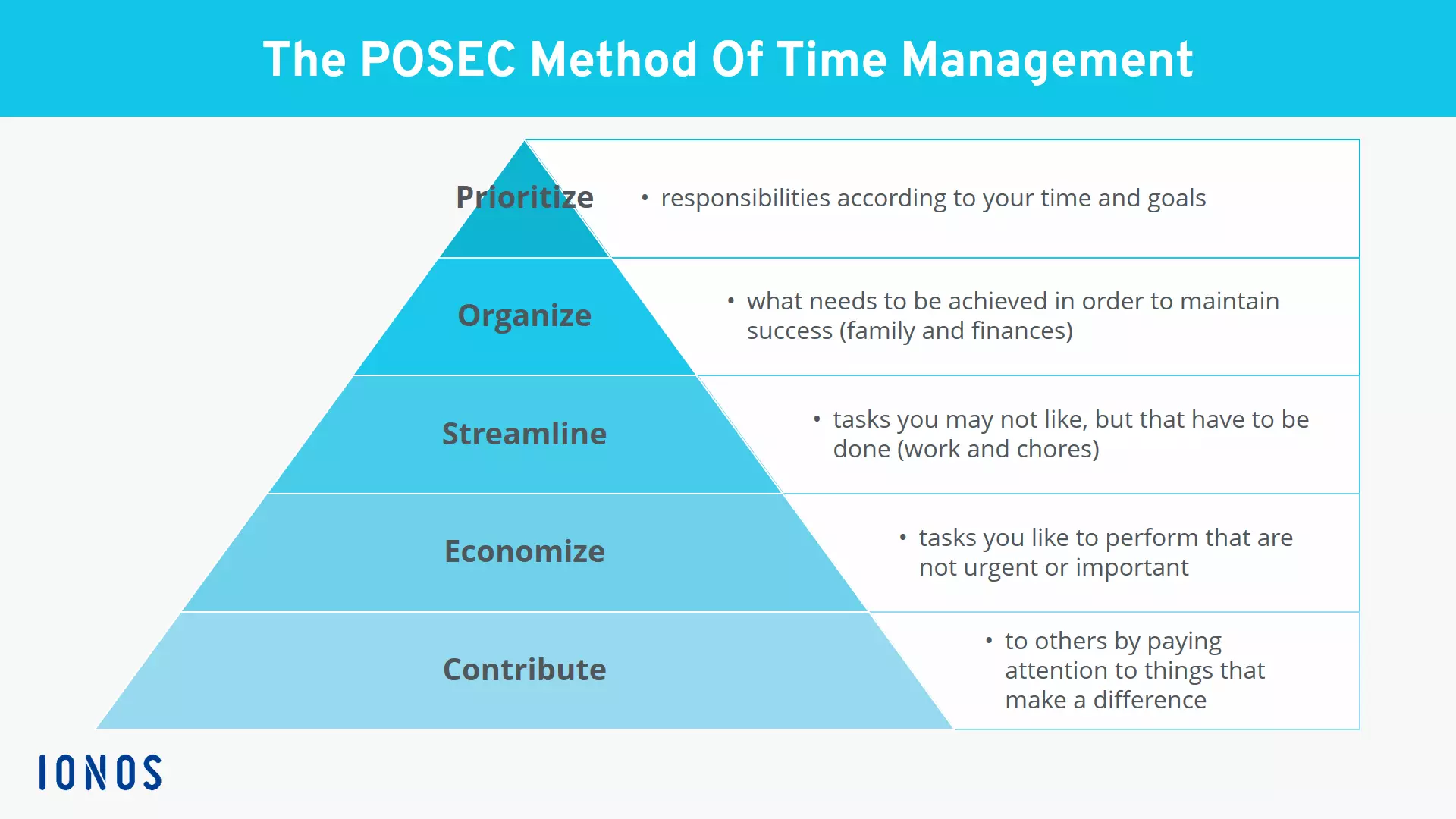The best time management techniques, summarized
At the end of the work day, do you often feel like you’ve hardly made any progress or failed to accomplish your most important tasks? If so, you might benefit from established techniques for managing your time. With the right time management methods, you can better distinguish between important and unimportant tasks, plan your to-dos better, perform tasks more systematically, and achieve results more efficiently.
What is time management?
Time management helps you use your available time as efficiently as possible in order to complete your tasks. But the term “time management” doesn’t really get to the heart of the matter because we can’t actually manage time. We can only manage the way we work. That’s why “self-management” has become an increasingly popular term when it comes to describing how we organize ourselves and use our time.
There are now many different time management methods for prioritizing, planning, performing, and evaluating the effectiveness of your professional and personal tasks.
No time management method is inherently better or worse than another. How well a method works for you depends on your personality, your work style, and the activities to which you apply the method. It’s up to you to find the time management method (or a combination of different techniques) that’s most effective for you.
The benefits of time management methods
If you want to manage your time better, it takes a little stamina at first. You should try out different methods and practice each one consistently over several weeks. Some methods will initially create extra work, but will ultimately speed up your workflows dramatically. A time management method has to become a habit before you can really judge whether it works for you. Often, a combination of several methods will be most effective. The process of trying out different techniques can be a little tedious, but it usually proves to be worthwhile.
Mastering time management will benefit you in several ways:
- Greater productivity
- Less stress
- More time for yourself, family, and friends
- Better work-life balance
Below is an overview of the most popular and effective time management methods. You can combine them to develop your own time management techniques.
Eisenhower Principle
Do you have difficulty prioritizing tasks? Do you often spend so much time answering emails that you no longer have time to concentrate on other tasks? Do you let meetings and phone calls fill up your day? Then you might want to apply the Eisenhower principle.
It helps you prioritize all your tasks by putting them into one of four quadrants of the Eisenhower matrix:
You should do quadrant 1 tasks immediately, otherwise you may encounter problems. You should schedule quadrant 2 tasks and not neglect them (which can easily happen). Tasks in quadrant 3 should be delegated in order to reduce your workload. You should eliminate quadrant 4 tasks, or if you have no other choice, delegate them. Learn more about how to use the Eisenhower method in our guide.
Pareto principle
Are you constantly busy but notice that everyone else seems to be getting more done with less effort? If so, you can use the Pareto principle to improve your time management. This method ensures that you spend your time focusing on the tasks that have the biggest effect.
The Pareto principle states that 20 percent of the work accounts for 80 percent of the results. That means you should prioritize the crucial 20 percent of tasks in your to-do list. Learn more about how to apply the Pareto principle in our guide.
ABC analysis
An ABC analysis is a classic business management technique for evaluating the basic strategy of a company. The method helps you visualize factors that have a decisive impact on the company’s success.
The analysis examines questions such as:
- Which customers account for the largest share of revenue?
- Which products or services contribute most to the company’s profit?
- Which raw materials cost the most to procure and store?
In order to answer these questions, you organize the different elements into the categories A (very important), B (not as important), and C (marginally important). You can also divide these elements into more than three groups. The most important thing is that they’re clearly defined.
This gives you a guiding principle for further business planning and helps you decide which tasks you need to tackle next. The analysis is more of a preparatory step for time management. Learn more about how to use an ABC analysis in our guide.
ALPEN method
The ALPEN method is more of a technique for better organizing your work day than a tool for business planning. It shows you how to structure your day for maximum effectiveness in five steps:
A: Define your activities. This involves creating a list of all your to-dos.
L: Estimate the length of time. Get a rough idea of the time it takes to complete each activity in your list. The total planned time gives you an idea of whether you can manage your planned daily workload.
P: Plan buffer time. You should plan only 60 percent of your work time and reserve 40 percent for unexpected events and social activities.
E: Establish prioritized decisions. Decide which task you’ll work on first and which ones you’ll do later in the day. Prioritization techniques and time management methods such as the Eisenhower matrix and the ABC analysis can be useful here.
N: Note your level of success. In the evening, check how successful your planning was and whether you’ve achieved your goals.
Pomodoro technique
If you work in an office, you’re well aware of all the potential distractions on your computer, including social media, emails, news websites, and more. If you find it difficult to resist these enemies of productivity and concentrate on a single task for an extended period, you should try the Pomodoro technique.
Taken from the Italian word for “tomato” – and so named because of the tomato-shaped kitchen timer used by its Italian developer, Francesco Cirillo – the Pomodoro technique breaks down tasks into small, manageable subtasks. You complete these tasks in 25-minute intervals rather than committing yourself to working through one task in its entirety before moving on to anything else. You take a 5-minute break after every 25-minute interval (pomodoro). After four pomodoros, you take a longer 30-minute break. Now you’ve completed a full pomodoro session.
By continuously alternating between concentration and rest, your brain is much more able to stay focused and effective over several hours. Learn more about how to use the Pomodoro technique in our guide.
SMART goals
If you and your team want to complete tasks in a motivated and efficient manner, you first have to set the right goals. If you set vague, unrealistic goals without a set deadline, you’ll sabotage your chances of success and never achieve good results, no matter which time management method you use for organizing your daily tasks.
You can use the SMART method to avoid common pitfalls when setting goals. According to this proven method, good objectives must meet five criteria: They should be specific, measurable, attractive, realistic, and time-bound.
Learn more about how to use SMART criteria in our guide.
Getting Things Done
Do you have a lot of personal and professional responsibilities and want to make sure you never miss an appointment or fail to use a window of time that suddenly opens up? Getting Things Done is a comprehensive time management system consisting of lists and calendars for your professional and personal life.
By capturing all your tasks and projects in writing, you’ll free up your mind and won’t forget anything. You can apply this method to any new information you receive or task you are given. It consists of five steps: capture, clarify, organize, reflect, and engage.
You have to process your task list on a regular basis. The Getting Things Done method provides a detailed decision-making process for deciding how to proceed with a task.
If you can’t complete a task within two minutes, put it on a different list such as “Projects”, “Next Actions”, or “Waiting For”. Enter appointments in your calendar. At least once a day, check your lists and decide which tasks you want to work on next. Learn more about Getting Things Done in our guide.
Timeboxing
The timeboxing method of time management comes from project management. With this technique, you assign tasks to specific timeboxes within which the tasks must be completed. The method is based on the assumption that tasks often take as much time as you have for them. Without a clear deadline, costs can increase or projects can be delayed unnecessarily. Timeboxing creates a productive sense of urgency.
Define timeboxes in which you or your team will focus on completing a task or achieving a result. Timeboxes can span hours, days, or weeks, depending on whether you use the time management method for individual tasks or entire project sprints. For the method to be effective, timeboxes shouldn’t be too long or too short, otherwise they’ll create stress, which impedes good results.
The POSEC method
The last method in our guide is POSEC, which is an acronym that stands for “Prioritizing by Organizing, Streamlining, Economizing, and Contributing”.
The POSEC method is modeled on the psychologist Abraham Maslow’s hierarchy of needs, in which a person’s basic needs and duties have more relative importance and therefore create a foundation for their more aspirational desires and goals. Here are the components of POSEC, in order of relative importance:
P: Prioritize. The first thing to do is to decide which goals you want to achieve and then list those goals in order of importance. Accordingly, you should plan on spending the most time on the goals you identify as the most important.
O: Organize. This step involves organizing and planning the recurring obligations and tasks that you have to accomplish in order to achieve the goals you have identified. Having these necessary tasks planned out gives you a sense of stability and security that allows you to move to the next step.
S: Streamline. In this step, you figure out ways to more efficiently fulfill your crucial obligations and duties. When it comes to tasks that you have to do – but don’t necessarily want to do – any time you are able to save can be applied to goals and desires further down your list of priorities.
E: Economize. This step involves budgeting time for the non-essential goals that you would like to achieve. In practical terms, these are the items that are enjoyable or otherwise desirable, but which tend to fall toward the bottom of your list of priorities. Using the efficiencies you have achieved by streamlining, you can budget time to achieve these non-critical goals.
C: Contribute. In this final step, you are able to give back to the group because your own needs have already been fulfilled. In your personal life, this might mean performing some kind of community service or helping someone else achieve their goals. In a work setting, it could mean making suggestions or setting up processes that can help your team or the company as a whole.
